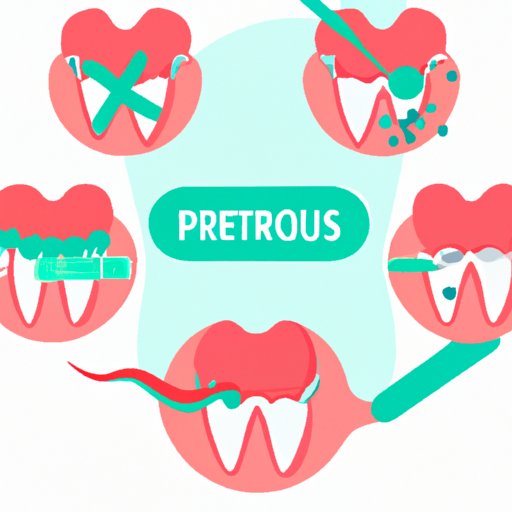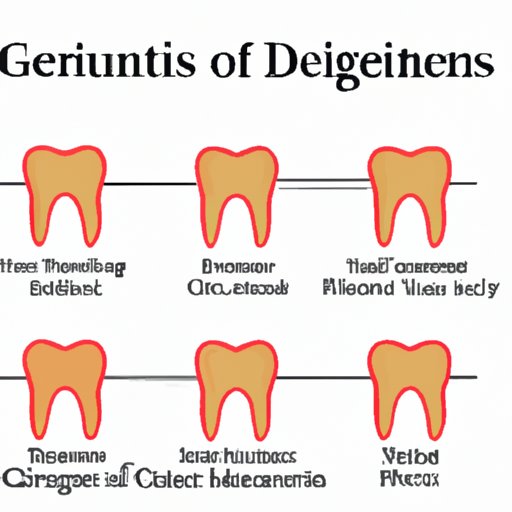
Introduction
Periodontal treatment is a critical aspect of maintaining optimal dental health. This comprehensive guide provides everything you need to know about periodontal treatment, from defining what it is and why it’s important to the different types of treatments available and how to make informed decisions. If you’re experiencing gum disease or curious about how to maintain long-term dental health, this article is for you.
Understanding Periodontal Treatment: What It Is and Why You May Need It
Periodontal treatment refers to the dental procedures and treatments used to treat gum disease, a common condition that can lead to tooth loss and other dental complications. Gum disease is caused by bacterial growth that typically results from poor dental hygiene, and can manifest in two different forms: gingivitis and periodontitis.
Gingivitis is the earliest stage of gum disease, characterized by red, swollen gums that may bleed when you brush or floss your teeth. If it’s not treated, gingivitis can progress to periodontitis – a more advanced form of gum disease that affects the gums, teeth, and bone structure supporting them. Symptoms of periodontitis include bleeding gums, bad breath, gum recession, tooth sensitivity or pain, and loose teeth.
The risks of not receiving periodontal treatment can be severe, ranging from tooth loss and jawbone deterioration to increased risk of heart disease and stroke. That’s why it’s crucial to seek dental care as soon as you suspect you may be experiencing gum disease.
Everything You Need to Know About Periodontal Treatment: A Comprehensive Guide
Periodontal treatment may involve a variety of different procedures, depending on the severity of the gum disease. Here are the most common types of periodontal treatment:
Scaling and Root Planing
Scaling and root planing is the most common non-surgical treatment for gum disease, and it’s used to treat both gingivitis and mild to moderate cases of periodontitis. This procedure involves removing plaque and tartar from above and below the gum line, and smoothing out the tooth roots to help gums reattach to the teeth.
Gum Graft Surgery
Gum graft surgery is a surgical treatment for gum disease that is typically used in cases where gums have receded significantly. During the procedure, gum tissue is taken from another part of your mouth (or a donor) and attached to the affected gum area to promote gum growth and prevent further recession.
Dental Implants
Dental implants may be recommended in severe cases of gum disease where teeth have been lost or removed. This procedure involves implanting an artificial tooth root (usually made of titanium) into the jawbone, which will serve as a base for a replacement tooth or bridge.
Steps to Achieving a Healthy Smile: The Importance of Periodontal Treatment
Preventing gum disease starts with good dental hygiene and early intervention. Brushing your teeth twice daily, flossing every day, and eating a balanced diet can help keep your teeth and gums healthy. Regular dental check-ups are important to allow your dentist to detect and treat gum disease early, before it progresses to more severe stages.
Periodontal treatment helps prevent gum disease from spreading while promoting healthy gums and preventing tooth loss. Consistent dental care and proper nutrition habits are essential to prevent the reoccurrence of gum disease.
Breaking Down the Various Types of Periodontal Treatment to Help You Make Informed Decisions
When it comes to selecting the right periodontal treatment, several factors play a role, including the severity of the gum disease, your overall health, your budget, and insurance coverage. Your dentist will work with you to determine which type of treatment is best for your specific case.
Scaling and root planing is typically the first line of treatment for gum disease but may be combined with additional treatments like gum graft surgery, dental implants, or other surgical procedures for more advanced cases.
Cost and insurance considerations are also important when deciding on periodontal treatment. Non-surgical treatments like scaling and root planing are usually more affordable than surgical options, but insurance coverage varies depending on the policy.

From Gingivitis to Periodontitis: A Look at the Stages of Gum Disease and How Treatment Can Help
Early detection is key to preventing the progression of gum disease from gingivitis to periodontitis. If gum disease is caught early, it’s typically easier to treat and can be managed or even reversed with consistent brushing, flossing, and regular dental check-ups. On the other hand, if gum disease is allowed to progress to its advanced stage (periodontitis), more extensive treatments will be required to prevent tooth loss or bone deterioration.
The Benefits of Early Periodontal Treatment and How It Can Save Your Teeth
Early intervention with periodontal treatment has been shown to have long-term benefits. Maintaining healthy gums and teeth can prevent more extensive and costly dental treatments down the road. Additionally, early treatment can help save teeth that may have been lost if gum disease was allowed to progress. Early detection of gum disease is key to long-term dental health and success.
Debunking Myths About Periodontal Treatment: Separating Fact from Fiction
Unfortunately, many myths and misconceptions are associated with periodontal treatment, which can prevent some people from seeking treatment proactively. One common myth is that gum disease only affects older adults. While gum disease is more common in older adults, it can affect anyone at any age. Another myth is that gum disease is not serious. The reality is that gum disease, if left untreated, can lead to tooth loss, bone deterioration, and other health problems like heart disease and stroke.
It’s essential to seek accurate information from dental health professionals to debunk these myths and make informed decisions about periodontal treatment.
Conclusion
Periodontal treatment is a critical aspect of maintaining optimal dental health. Understanding what it is, how it’s performed, and what to expect can help you make informed decisions about your dental care. Whether you’re seeking treatment for gum disease or aiming to prevent it altogether, consistent dental care and preventive treatments can help promote healthy gums and teeth for years to come.




